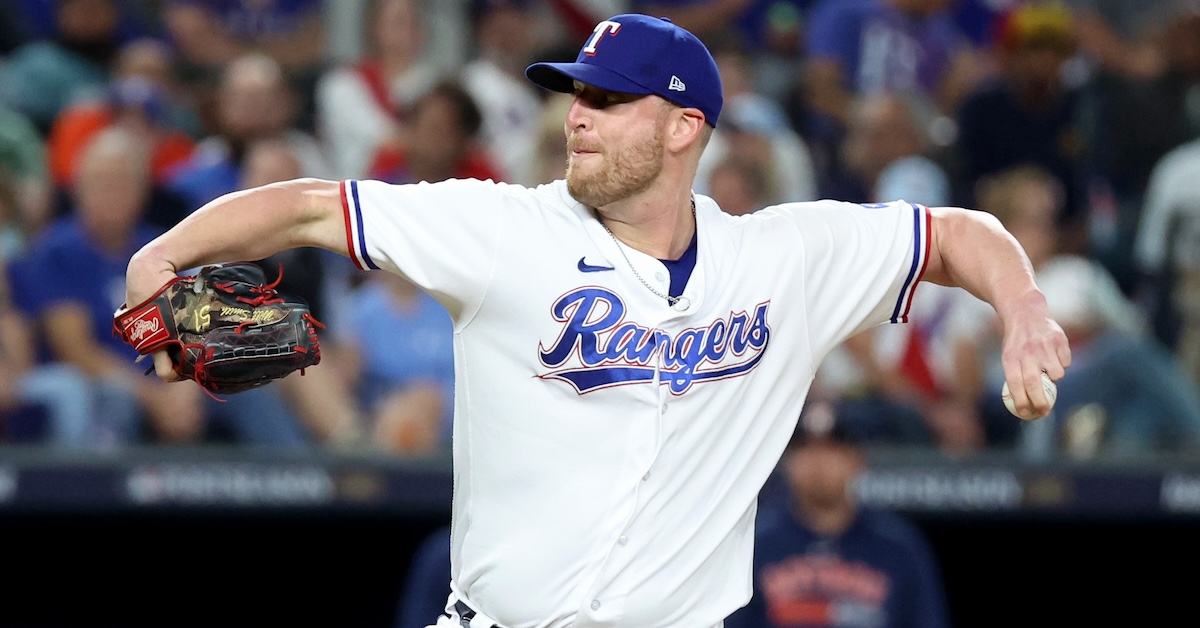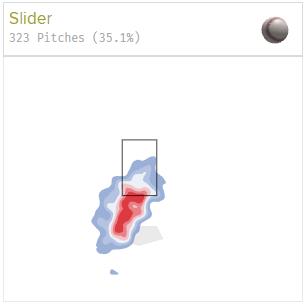
Kevin Jairaj-USA TODAY Sports
The biggest domino of the offseason has fallen. Shohei Ohtani is the newest member of the Dodgers, and the discourse surrounding the unique nature of his contract could be enough to last the entire offseason. But for teams, the floodgates are now open to throw the money earmarked for Ohtani elsewhere.
Unfortunately, I don’t have Cody Bellinger or Yoshinobu Yamamoto news to report; it’s only been three days, after all. But the weekend did bring a couple more reliever signings, this time at least slightly more impactful than the wave of minor league and split contracts that characterized the early offseason.
Smith has been a solidly good, sometimes great reliever for a decade now, but his biggest claim to fame (aside from his name) is that he’s won rings in each of the past three World Series, each with a different club. His talents took him from Atlanta to Houston to Arlington, celebrating a championship in each city before promptly leaving for a new destination. His latest stop is a return home of sorts; Smith made his big league debut with the Royals back in 2012 as a starter, before being moved to the bullpen the next year and immediately taking off.
Smith has consistently found himself near the top of the league in strikeout rate thanks to his plus slider, which he threw nearly as much as his fastball before it was cool to do so. But he isn’t the pitcher he used to be before crossing the wrong side of 30, and his days as one of baseball’s premier late-inning arms are coming to an end.
Will Smith Discovers the Aging Curve
| Year |
K% |
BB% |
SwStr% |
ERA- |
| 2019 |
37.4% |
8.2% |
15.5% |
65 |
| 2020 |
29% |
6.5% |
17.5% |
99 |
| 2021 |
30.7% |
9.9% |
14.2% |
81 |
| 2022 |
24.9% |
9.6% |
14.8% |
99 |
| 2023 |
24.3% |
7.5% |
13.4% |
100 |
Smith’s ERA- was his worst since his debut season as a starter, as was his strikeout rate and ground ball rate (which was never high to begin with). But his peripherals shine on him a bit more brightly. What he has lost in bat-missing ability has, at least for now, been made up for by his improved contact quality. His 3.28 xERA with the Rangers was his best in a half-decade, as was his HR/9. He induced popups at a decent rate, making his lack of ground ball outs look less scary. And his slider, which he’s located more consistently down and to the glove side, had the highest pitch value of his career in 2023 despite whiff rates far below his usual standard. The continued excellence of his breaking ball has allowed him to remain a lethal weapon against left-handed hitters as his stuff declines; the 66 lefties who stepped into the box against him last year mustered up just one extra-base hit. His slider reached new bests in exit velocity allowed and xwOBAcon, though these skills are certainly less predictive of future success than simply striking everyone out.
Smith’s profile has many qualities desired by contending teams looking for mid-level bullpen acquisitions. He’s currently the only lefty in the Royals’ projected bullpen (as he was on the Astros two years ago) and has experience as a closer. But the Royals aren’t contenders; they might be as far away from contention as any team in baseball. In the immediate term, he’ll stabilize an incredibly inexperienced and unproven relief group. The other seven members of Kansas City’s bullpen have combined for just one season of at least 50 innings and average or better ERA- (2019 Nick Anderson); Smith alone brings seven such seasons of experience to the table.
If things go well for Smith, he certainly won’t be playing out a full season in Kansas City. With the playoffs completely out of the picture, it’s likely that Smith, Anderson, and every other veteran on the team sans Salvador Perez will be flipped at the deadline. Last year’s signing of Aroldis Chapman netted the Royals the best pitcher on their roster in Cole Ragans, and as one of the only teams without a 50 FV prospect, they could certainly use all the farm help they can get.
Throughout his career, Chafin has been one of the most consistently excellent relievers in baseball. In the past nine years, he ranks 17th in ERA- and 11th in FIP- among relievers with at least 400 innings pitched. He’s not earth-shattering on the level of Kenley Jansen or Raisel Iglesias, but he’s had quite the impressive decade for someone who’s never been a big name closer or earned more than $6.5 million in a season. His model of success is simple: he strikes out a lot of batters and keeps the ball on the ground (and, more importantly, in the yard).
Chafin’s arsenal primarily consists of a sinker and slider, though he’s one of few pitchers whose east-west pitch movement doesn’t generate a sizable platoon split. In fact, he’s handled righties better than lefties in each of the past two seasons. One way he’s done this is by using his tertiary pitch, a four-seam fastball, more against opposite-handed hitters. He doesn’t exclusively throw the sinker to lefties and four-seamer to righties, but he certainly favors one fastball type over the other in each situation. He also doesn’t throw a sweeper or slow, bendy slider that tends to get picked up well by opposite-handed hitters; Chafin’s has less than half an inch of horizontal movement but considerably more drop than the league average. He tends to throw his fastballs for strikes and let his breaking ball play off them, with late break toward the ground.
Andrew Chafin Pitch Usage
| Pitch Type |
vs. RHH |
vs. LHH |
| Sinker |
55% |
27% |
| Slider |
32% |
41% |
| Four-Seam |
12% |
32% |
| Changeup |
1% |
0% |
SOURCE: Baseball Savant
Chafin is coming off a down year, performing well with the Diamondbacks but putting up ugly numbers after being moved to Milwaukee at the trade deadline. At the end of the year, his overall ERA, FIP, and xERA were the highest of any full season he’s played. His struggles were primarily driven by a walk rate higher than his career standard, as well as a string of homers allowed after his trade to the Brewers. Chafin doesn’t really like to throw the ball in the strike zone. I wouldn’t even say he has terrible command; most of the time, the ball ends up where he wants it, but that location is usually below the plate. Just look at the heatmap for his slider; I’m not sure if any other pitch in baseball has so much of the red blob outside the zone.

The numbers confirm this, as Chafin has the lowest average pitch height of any slider in the league. Throughout his career, he has landed just over 30% of his sliders in the strike zone. In 2023, that number fell to under a quarter. An advantage of such a zone-avoidant approach is that when batters swung at that pitch, they missed over half the time. But big league hitters usually don’t swing when they see pitches headed for the dirt, and a strike rate of just 53% is far too low from what should be his best offering.
Chafin shores up the bullpen for a Detroit squad who, despite a lackluster offense, could contend next year in a weak AL Central. Steamer projects him for the third-best ERA in this Tigers group, right behind 2023 breakout arms Will Vest and Jason Foley. He’ll serve as the lefty at the back of the ‘pen alongside fellow southpaw Tyler Holton, who has excelled in a multi-inning role but doesn’t have the swing-and-miss stuff to slot comfortably in the eighth or ninth inning. They certainly lack the name brand value, but Chafin, Vest, Foley, and Alex Lange could form a formidable high-leverage core for a strong Tigers pitching staff.
Source
https://blogs.fangraphs.com/veteran-southpaws-smith-chafin-return-to-old-homes/
 Backyard GrillingWeekend WarriorsAdvice from DadBeard GroomingTV Shows for Guys4x4 Off-Road CarsMens FashionSports NewsAncient Archeology World NewsPrivacy PolicyTerms And Conditions
Backyard GrillingWeekend WarriorsAdvice from DadBeard GroomingTV Shows for Guys4x4 Off-Road CarsMens FashionSports NewsAncient Archeology World NewsPrivacy PolicyTerms And Conditions
